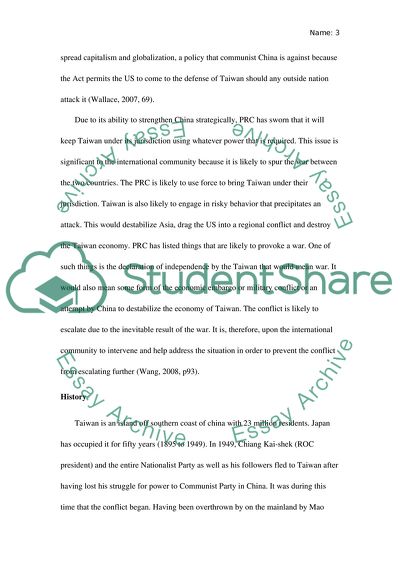Cite this document
(China-Taiwan Issue Coursework Example | Topics and Well Written Essays - 3750 words, n.d.)
China-Taiwan Issue Coursework Example | Topics and Well Written Essays - 3750 words. https://studentshare.org/politics/1849019-china-taiwan-issue
China-Taiwan Issue Coursework Example | Topics and Well Written Essays - 3750 words. https://studentshare.org/politics/1849019-china-taiwan-issue
(China-Taiwan Issue Coursework Example | Topics and Well Written Essays - 3750 Words)
China-Taiwan Issue Coursework Example | Topics and Well Written Essays - 3750 Words. https://studentshare.org/politics/1849019-china-taiwan-issue.
China-Taiwan Issue Coursework Example | Topics and Well Written Essays - 3750 Words. https://studentshare.org/politics/1849019-china-taiwan-issue.
“China-Taiwan Issue Coursework Example | Topics and Well Written Essays - 3750 Words”. https://studentshare.org/politics/1849019-china-taiwan-issue.


